Alternative to Braces: Which Treatment is Right for You?
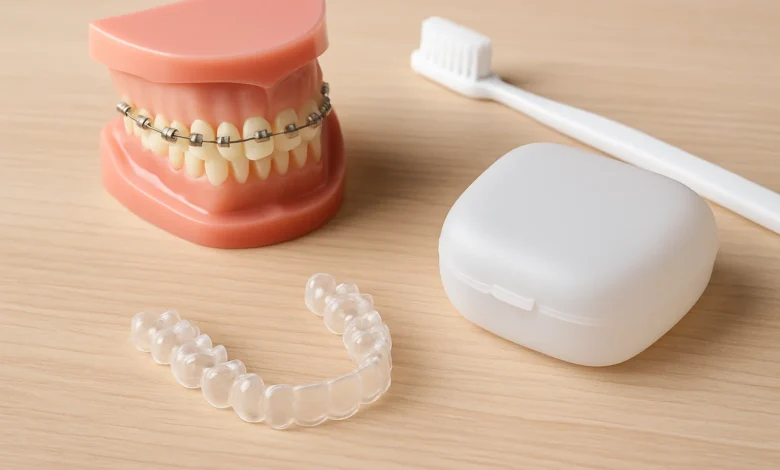
Alternative to Braces: Exploring the Best Options for Teeth Alignment
Introduction
Braces serve as the primary orthodontic solution for tooth alignment and bite correction yet patients have multiple alternatives to consider. Several options beyond traditional braces exist to meet different patient requirements for discreetness comfort and speed of treatment. Orthodontics maintains traditional metal braces as its standard yet dental technology advancements have improved alternative treatments for patients.
This guide provides complete information about brace alternatives through clear aligners and lingual braces and ceramic braces and advanced treatment options. The following guide evaluates different orthodontic treatments against traditional braces while presenting their advantages and disadvantages to assist you in selecting your best treatment option.
1. What Are Braces and Why Do People Need Them?
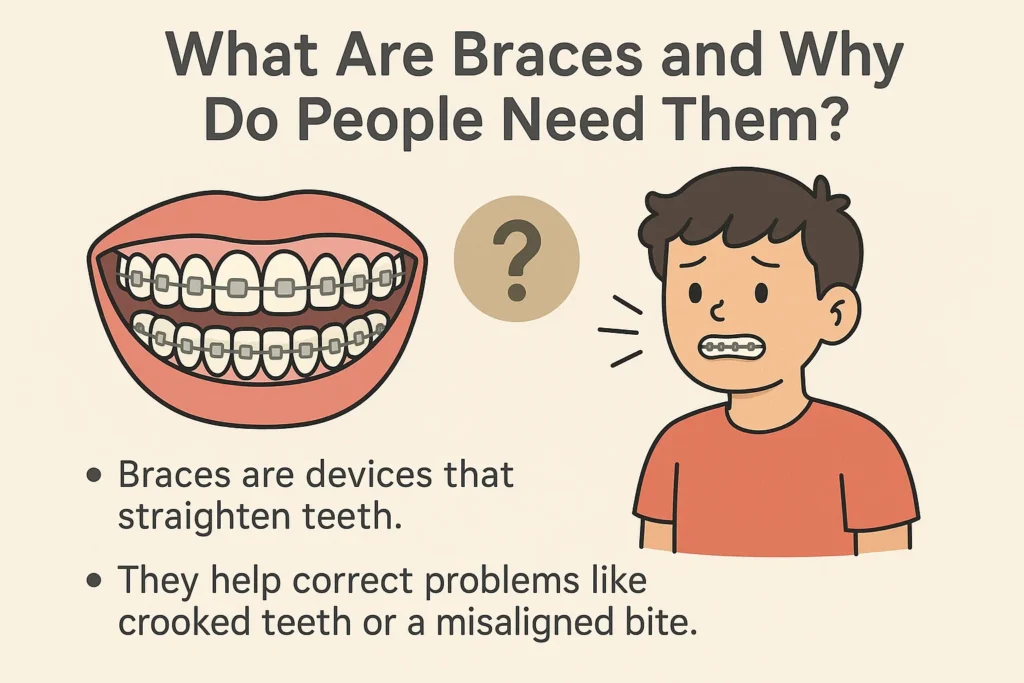
Braces are defined as orthodontic apparatuses aimed at providing aesthetic and functional improvement of the dentition. They are applied manually through the use of metal brackets, wires, and elastic bands which are designed to advance teeth using controlled forces.
The different categories of braces and their mechanisms of action are as follows:
Misaligned teeth: Straightening of teeth can be enhanced through the application of braces.
Bone and dental structures discrepancies: Components of the bite such as overbite, underbite, and crossbite can be enabled through braces and adjustment of the jaw.
Spaces between teeth: Spaces between the teeth can be filled through the use of braces by bringing the teeth closer to each other.
Teeth crowding: Application of braces can rectify the condition of crowding by resolving overlapping of teeth.
Despite the efficiency of braces, there are still a number of patients who are opting for other forms of treatment that focus on providing comfort, speed of treatment, and less visibility.
2. What Is an Alternative to Braces?
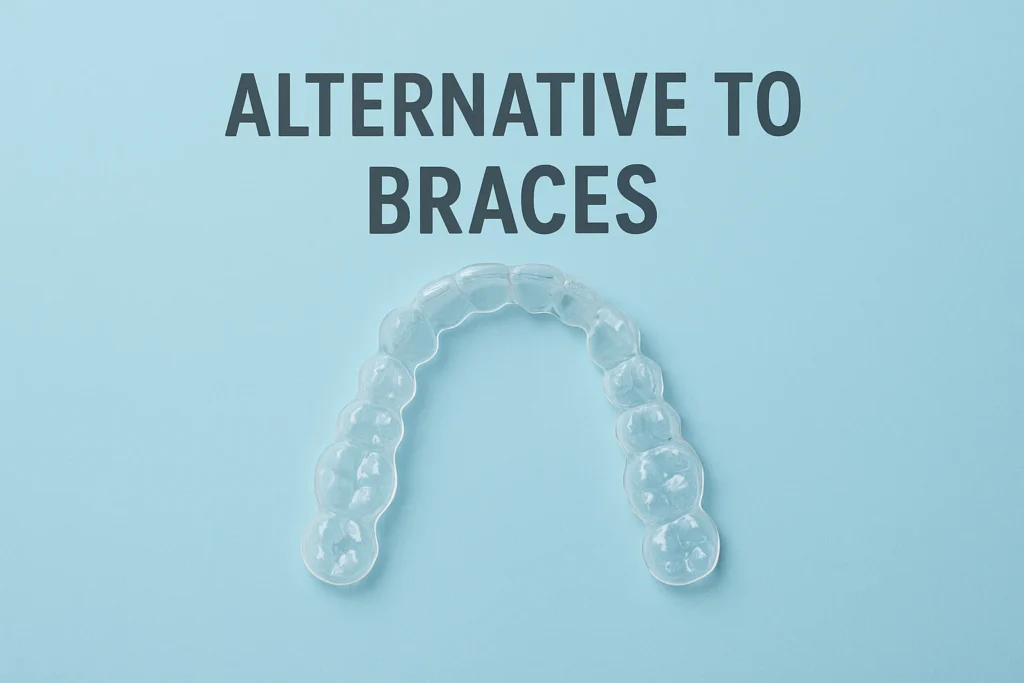
For individuals wishing to align their teeth, there are a number of options which may be easier to wear, less visible, or less of a burden compared to traditional braces. These alternatives employ various methods and technologies to provide comparable outcomes to conventional braces.
Clear Aligners
Clear aligners are perhaps the best-known alternatives to braces. Aligners like Invisalign utilize a set of custom-made, sequentially worn, transparent plastic trays that reposition teeth. Their removability makes them convenient for a person to eat, drink, and even clean their teeth without any obstructions.
Lingual braces share the mechanics of traditional metal braces as they are bonded to the teeth and connected with a wire. However, they are fixed to the back of the teeth, making them invisible from the front. Similar to traditional braces, lingual braces provide a discreet treatment option for individuals concerned with aesthetics.
Ceramic braces work like metal braces with the exception that the brackets are made with tooth colored or clear materials which is less conspicuous. They are great for people who seek the effectiveness of traditional braces, but prefer a more subtle look.
Retainers
Retainers are designed to uphold the alignment of the teeth following the conclusion of orthodontic treatment. These devices are not intended to correct alignment issues; however, some cases of very minimal misalignment can be managed with retainers instead of braces.
Veneers
Veneers are not meant to address significant misalignment, however, they are an appealing and more accessible option than braces for individuals wishing to rectify slight misalignments. Veneers are designed to enhance the aesthetic appearance of teeth by addressing gaps, small chips, or mildly crooked teeth. They can be surgically placed as thin shells of porcelain or composite resin and bonded to the frontal section of the teeth.
3. Comparing Traditional Braces vs. Alternatives
When considering alternatives to braces, it’s important to weigh the advantages and limitations of each option. Here’s how traditional braces compare to alternatives:
| Feature | Traditional Braces | Clear Aligners | Lingual Braces | Ceramic Braces |
|---|---|---|---|---|
| Visibility | Highly visible (metal) | Nearly invisible (clear) | Invisible (back of the teeth) | Less visible (tooth-colored) |
| Comfort | Can cause discomfort initially | Generally more comfortable | May irritate the tongue | Less irritation but bulkier than clear aligners |
| Treatment Duration | 12-36 months | 6-18 months (faster for mild cases) | 12-36 months | 12-36 months |
| Food Restrictions | Avoid hard or sticky foods | No food restrictions (removable) | Same as traditional braces | Same as traditional braces |
| Maintenance | Requires regular adjustments | Change aligners every 1-2 weeks | Regular check-ups required | Regular check-ups required |
| Suitability for Severe Cases | Best for complex cases | Best for mild to moderate cases | Best for complex cases | Suitable for moderate cases |
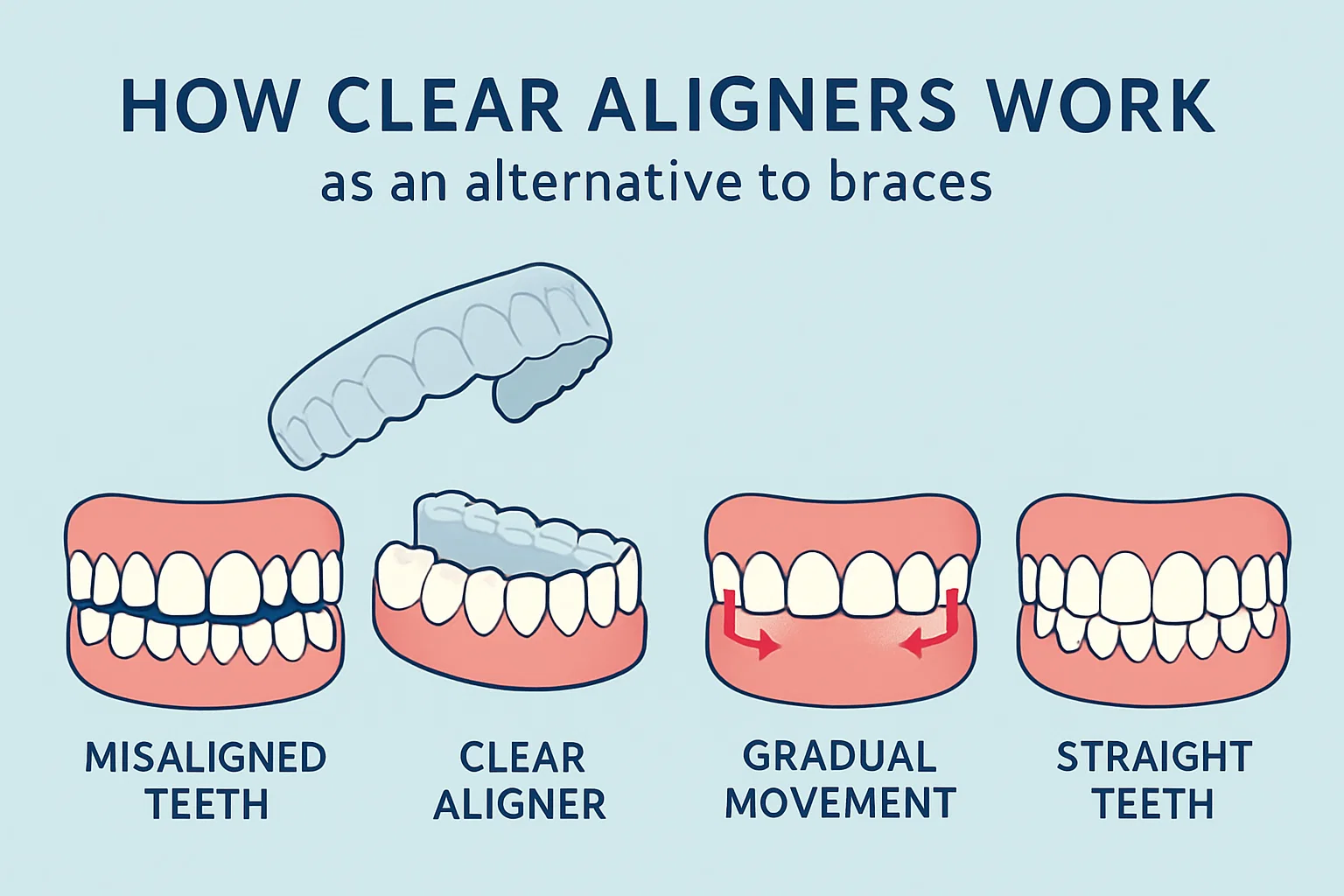
Advantages of Clear Aligners
The transparent design of clear aligners makes them nearly invisible to the eye.
Advantages of Clear Aligners
Aesthetics: Unlike traditional braces, clear aligners are virtually unnoticeable due to their transparent nature.
Comfort: Patients using clear aligners do not experience bracket or wire irritations which tend to make other orthodontic methods less comfortable.
Removable: Aligners can be removed during meals, which aids to easier cleaning of the aligners and ensures better oral hygiene.
Fewer Dental Visits: Unlike traditional braces, aligners require less frequent orthodontic appointments for treatment adjustments.
Types of Clear Aligners
Invisalign: The most popular clear aligner system, Invisalign is custom-made to fit each patient’s teeth and gradually shifts them into alignment.
ClearCorrect: Another brand of clear aligners that works similarly to Invisalign.
Limitations of Clear Aligners
Not Suitable for Severe Cases: Clear aligners are best for mild to moderate dental issues. They may not be effective for complex alignment issues or bite problems.
Compliance: Since clear aligners are removable, the treatment’s success depends on how often they are worn. It’s essential to wear them for 20-22 hours per day for optimal results.
5. Lingual Braces: The Hidden Alternative
Like traditional metal braces, lingual braces function similarly but are a more aesthetically pleasing alternative for people who are self-conscious about their appearance. Although discreet, lingual braces are positioned on the back of the teeth, rendering them invisible from the front.
Benefits of Lingual Braces
Invisible: Since they are placed behind the teeth, they are completely hidden from view.
Effective for Severe Cases: Lingual braces can correct a wide range of dental problems, including severe bite issues, and are just as effective as traditional braces.
When to Choose Lingual Braces
For those who want a solution that is invisible yet need the effectiveness of traditional braces for a more complex issue, lingual braces are ideal. Adults and those in the public eye who require a more discreet option tend to choose these braces.
Drawbacks of Lingual Braces
Comfort: Lingual braces have been shown to cause discomfort lasting several weeks, especially when compared to traditional or clear aligners. This increases with the irritation to the tongue.
Speech: For some, there could be a minor speech impediment associated with the use of lingual braces; a lisp could be present.
Higher Cost: The cost of lingual braces is marked higher than traditional braces. The need for highly skilled and specialized orthodontists also add to the cost, as they are more difficult to find.
6. Ceramic Braces: A Less Visible Alternative
Like traditional metal braces, ceramic braces function in the same manner; however, their brackets are made from either tooth-colored or clear materials, which makes them less conspicuous. They are ideal for those seeking the function of metal braces, but without the cosmetic concern of visibility.
Advantages of Ceramic Braces
Aesthetics: Ceramic braces are much more discreet than traditional metal braces and blend in better with the natural color of your teeth.
Effective for Complex Cases: Like traditional braces, ceramic braces are suitable for people with complex dental issues or bite problems.
Disadvantages of Ceramic Braces
Fragility: Ceramic brackets are more fragile than metal ones and can break if not handled carefully.
Staining: The elastic bands used with ceramic braces can stain easily, especially if you consume food or drinks that are known to stain teeth (such as coffee or curry).
Cost: Ceramic braces tend to be more expensive than metal braces, although they are often more affordable than lingual braces.
7. Retainers: The Post-Braces Alternative
Retainers are utilized following the removal of braces to uphold the newly acquired positioning of the teeth. Although retainers do not straighten teeth in the preliminary stages, they can serve as a substitute for braces for those who have slight misalignment of the teeth.
8. Veneers: A Cosmetic Alternative to Braces
For those with only slight aesthetic issues, veneers offer a faster and less invasive option than braces. They are a type of dental prosthetic made of porcelain or composite resin veneers, customized for each patient and adhesively bonded to the facial surfaces of the teeth.
Benefits of Veneers
Quick Solution: Veneers can instantly improve the appearance of crooked or chipped teeth without the need for long-term treatment.
Durability: Veneers are durable and resistant to stains, making them a good option for those seeking a long-lasting cosmetic fix.
When to Choose Veneers
Veneers are best suited for individuals who have minor misalignments or cosmetic imperfections and want a fast, non-invasive solution.
Limitations of Veneers
Not for Major Alignment Issues: Veneers are not suitable for correcting significant misalignment or bite problems.
Permanent: Once applied, veneers cannot be reversed, so careful consideration is needed.
9. Factors to Consider When Choosing an Alternative to Braces
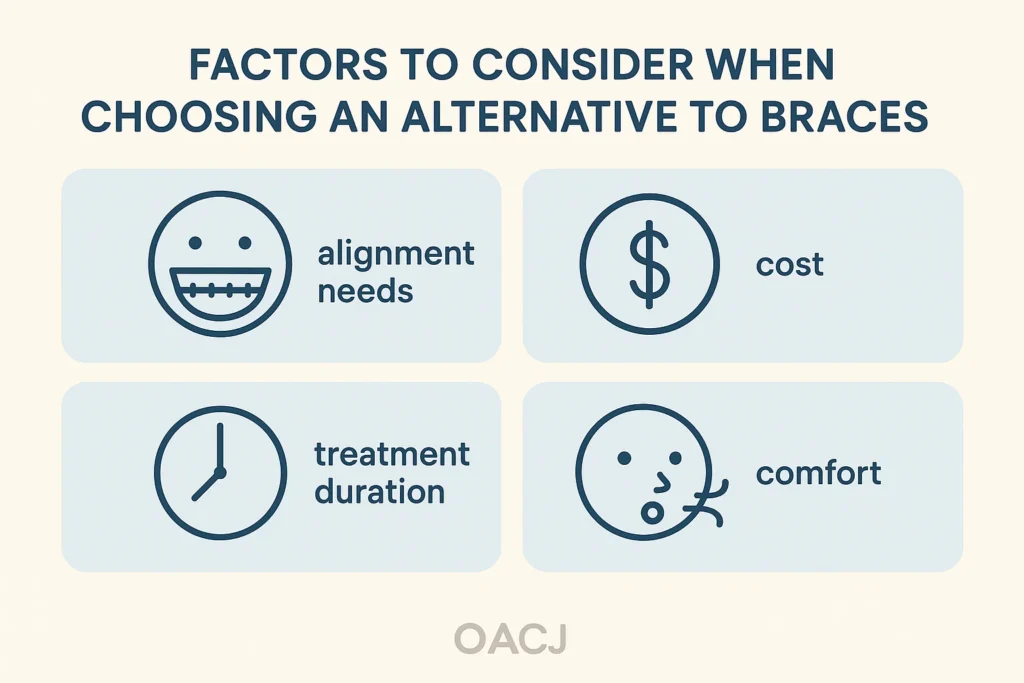
When considering an alternative to braces, several factors need to be evaluated:
Severity of Your Alignment Issues: Your particular alignment issues can be sorted into categories. For instance, clear aligners are most appropriate for mild rotatory problems, while traditional and lingual braces are imperative for more complicated concerns.
Treatment Time: Compared to traditional braces, clear aligners frequently offer more rapid results. However, results are contingent on how committed you are to wearing them.
Cost: There is significant variation in the price of orthodontic treatment. Brunettes usually have the lowest cost, while braces linguales and braces clear tend to be on the higher end.
Aesthetic Preferences: For individuals who are conscious of the visual appearance for the braces, alternatives such as braces clear and braces linguales are more acceptable.
Comfort: Comfort is of balance and some approaches are troubling, for instance, modern metal braces, have to whitish braces.
10. How Much Do Alternatives to Braces Cost?
The cost of orthodontic treatment varies based on the type of treatment, the complexity of the case, and the duration of the treatment. Below is a general breakdown of the costs:
Clear Aligners (Invisalign): $3,000 – $8,000
Lingual Braces: $8,000 – $10,000
Ceramic Braces: $4,000 – $8,000
Traditional Metal Braces: $3,000 – $7,500
Veneers: $800 – $2,500 per tooth
11. The Process of Getting an Alternative to Braces
Whichever method you choose, it usually starts with a visit with a dentist or an orthodontist. At this appointment, the orthodontist evaluates all of your requirements, Familiarizes himself with your objectives, and offers the best suggestion for braces removal. Traditionally, the flow of the process is as follows:
Initial Impressions or Scans: To create your treatment plan, your orthodontist will take impressions or scans of your teeth.
Customized Treatment: Based on your needs, your orthodontist will create a customized treatment plan, whether it’s for clear aligners, lingual braces, or another option.
Regular Follow-ups: Regular visits will be required to ensure that your treatment is progressing as planned.
12. What to Expect During and After Treatment
The time required for a particular treatment is determined by the severity of the problem and the selected treatment strategy. Resolving the issue will necessitate following all the recommendations issued by your orthodontist. Moreover, post-treatment, it is highly probable that a retainer will be required to maintain the newly achieved orthodontic results.
13. Final Thoughts: Finding the Best Alternative to Braces for You
The decision regarding which treatment to progress with in-lieu of traditional orthodontic braces is determined by one’s dental needs, financial capacity, and orthodontic appearance preferences. Alternates to traditional braces which include, but not limited to, clear aligners, lingual, ceramic braces and veneers, have different advantages and works best in different dental scenarios.
Always remember to consult with your orthodontist for professional advice and evaluation of your options prior to making your final decision. Whether your desire is to have a virtually inconspicuous orthodontic treatment, or to quickly rectify alignments, there always exists a suitable treatment available.
Can You Eat Cereal with Braces? Find Out What’s Safe and What’s Not


